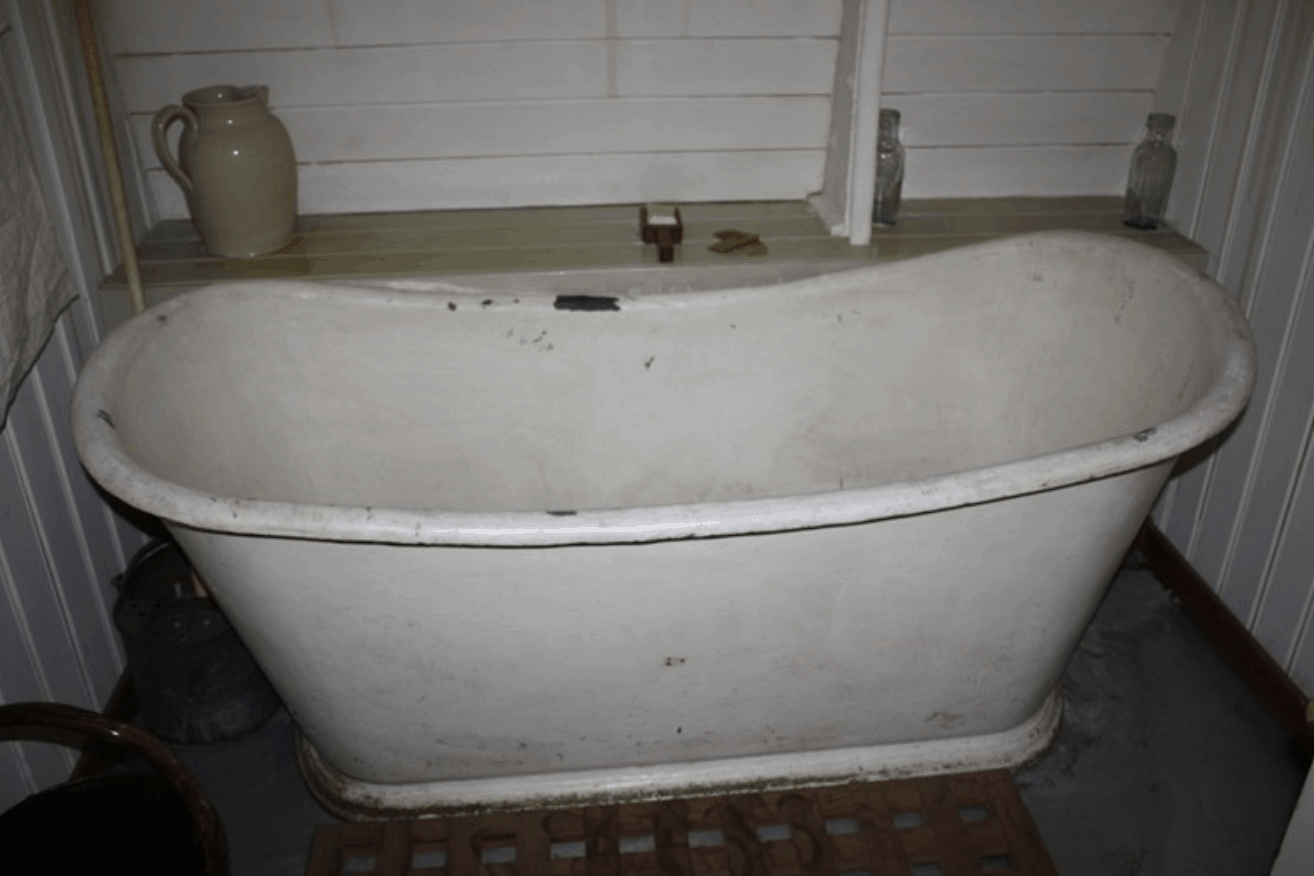- This enamel bathtub is the only museum object currently on board the SS Great Britain, but we know very little about it. We cannot be sure when it was made, if it was made specifically for the ship or at what point in its history it was originally taken on board.
- After the ship was sold to the Falkland Island Company in 1886 most the useful items were taken off so it could be used as a floating warehouse. As it would have been useful, it is likely the bath was removed.
- In 1970 when the salvage team arrived in the Falkland Islands to save the SS Great Britain, many of these items were given to the team so that they could return to Bristol with the ship as they were part of its history. From photographs taken in 1970, we believe the bathtub returned to Bristol with the ship.
- When travelling to and from Australia, the SS Great Britain would have had four bathtubs like this one. These would have been exclusively for first class passengers. The rest of the passengers and crew had to find other ways to keep themselves clean.
The Story
Getting ready to go home
In 1970 the decision was taken to save Isambard Kingdom Brunel’s only surviving ship the SS Great Britain. To do this the ship had to be brought from the Falkland Islands, where it had been since 1886, back to Bristol. It was not going to be easy! The ship was sitting on the shallow seabed in Sparrow Cove and an inspection showed a huge crack in the side of the rusting iron hull. Due to the various cracks and holes in the hull, it would not be able to sail the 8,000 miles across the Atlantic Ocean to Bristol. Instead, the plan was to tow the ship home on top of a floating platform know as a pontoon.
To get the SS Great Britain ready for the journey, the salvage team had a lot of work to do. They put down new wooden planks to make the decks safe and cut down the three remaining masts to make the ship easier to tow. But the biggest problem was the hull. Divers had to temporarily fix the holes in the flooded hull so the ship could be re-floated. They also needed to patch up the large crack in the hull. A call went out on local radio asking Falkland Islanders if they could donate any unwanted mattresses to help the project. Hundreds of mattresses were donated to the salvage team. They were cut up, dragged underwater and stuffed into the crack.
The next stage was to start to pump out all the water so the ship could finally float. The pontoon was sunk, and the newly floated SS Great Britain was positioned on top of it, so at last it was ready to begin the long journey home.




